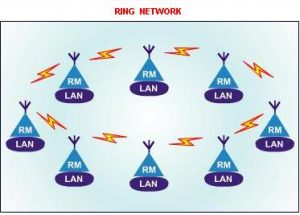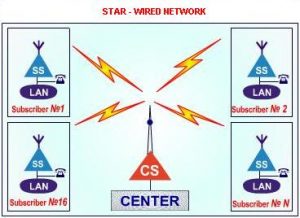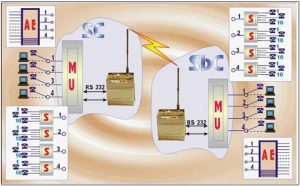The system of operative communication is intended for organization of the data transmitting network by wireless.
Radio modems (RM), which operates in a monofrequent duplex mode with time division of reception-transfer and use of pseudo-casual sequences by number of elements 127 are used as radio stations.
Following structure of systems is proposed:
· central station (CS);
· 16 subscriber’s stations (SS) i.e. radio modems (RM).
Before the operation, addressing of RM is carried out by the cartridge with SS addresses and operating codes. The device (cartridge) with SS addresses and operation codes are moved from CS.
Number of subscribers in subgroup is 16, and number of subgroup in one region is 6.
In that case RM-s operate on one logical direction.



